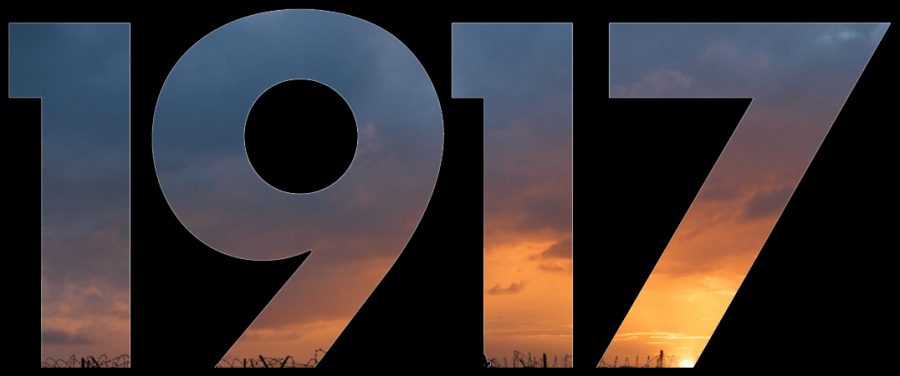‘1917’ wins award with unique filming style
May 19, 2020
Director Sam Mendes’ story about two young soldiers on a dangerous mission in the middle of the first world war amazed the Academy of Motion Picture Arts and Sciences with its innovative cinematography.
“1917,” released on December 25, 2019 tells the story of Lance Corporal Schofield (George MacKay) and Lance Corporal Blake (Dean-Charles Chapman). These two young English soldiers deployed in France are assigned the mission of informing the troops about a German-installed trap that posed potential threats.
The film exposes the difficulties of raking through crowded trenches of soldiers: dangerous stretches full of barbed wire, corpses hanging from the wire, and craters creating pools of rainwater where bodies of English and Germans alike float. The plot follows our protagonists crossing the territory the German troops left in their retreat while facing the remaining obstacles, traps, and German soldiers, with the aim of delivering an important message on which the lives of the English soldiers depend.
Mendes based the plot of 1917 on stories his grandfather told him. According to BBC UK, Alfred Mendes, Sam’s grandfather, enlisted at 17 and served in the First Rifle Brigade from 1916 to 1918. “He didn’t talk about it for 50 or 60 years, but his grandchildren for whatever reason managed to get it out of him,” Mendes said to Radio 1’s film critic Ali Plumb.
One of the stories stuck with Mendes. “There was one particular story he told us about carrying a message across no man’s land alone at dusk,” Mendes said. “I couldn’t let go of that one image. I thought ‘What if we develop that into a single journey of more epic proportions?’”
The shocking scenes of the battlefield are accompanied by a peculiar cinematographic style, creating the feeling the entire movie was made in one continuous shot. This style creates an immersive experience in moments of action.
The one responsible for this visual achievement is cinematographer Roger Deakins. According to Insider, the film was not actually made from a single fluid shot. The filming process lasted approximately ten weeks. Innovative editing and scenery achieved the desired effect. The scenes from 1917 are composed of longer shots than usual.
According to Insider, the cameras used were lighter than usual, which allowed operators to film while running behind actors or to move 360 degrees around them in narrow spaces. “Creatively, Sam and I talked about it,” Deakins said. “We wanted the camera to be quite steady. We didn’t want a jerky camera.”
The mix between innovative cinematography and effects generated by pyrotechnics, scenery, and computer-generated image on a smaller scale, made 1917 receive the Academy Award for best special effects, all accompanied by a sound mix that also won the academy award. The R-rated movie earned just over $368 million worldwide, according to The Box Office.
The winning film of the Golden Globe award for best film is available for rent and purchase on YouTube, Amazon Prime Video, Vudu and Google Play.



